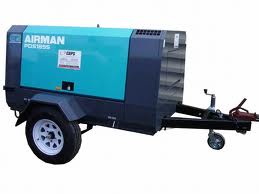SZX10 RESEARCH STEREOMICROSCOPE
SZX10 RESEARCH STEREOMICROSCOPE OVERVIEW
Natural View - original shape, authentic colors
The DFPlan objective series is showing the shape of the specimen as
it is, without any distortion. Furthermore the careful selection of lens
surface coating and glass materials in the entire optical system makes
it possible to observe and document specimens in their original,
authentic colors. These features make the SZX10 the ideal choice for any
measuring and verification task.
Automation
The SZX10 motorized focus drive (optional) is making the digital
documentation with extended focal imaging (EFI) efficiently and fully
automatic. This even allows creation of pseudo 3D images, closing the
gap between documentation and what the eyes have seen before through the
stereoscopic lightpath. To facilitate automated inspections the
Olympus cellSens® Imaging Software family offers all the tools required from simple 2D measurements up to complex phase analysis in an easy to use environment.
Reliability and Repeatability
Many imaging or measuring tasks require the use of the same zoom
magnification setting to ensure consistent and comparable results. The
integrated 11 position click-stop provides quick and easy access to this
important function. In addition the SZX10 allows the quick change
between stereoscopic view and axial light path for the camera. The
advantage of the axial light path setting is that measurements taken
with the camera are reliable and precise in all directions making
results independent from the orientation of the sample under the
microscope.
Ultimate visual comfort
The advanced Olympus Comfort View eyepieces on the SZX stereo
microscopes enable a significantly larger range of eye movement for
viewing the 3D image, making both short and long term use much more
comfortable. This also makes it easier to form the stereo image,
resulting in reduced occurrence of eyestrain.
Ergonomic
Olympus believes that ergonomy is not an add-on and therefore each
microscope is designed with the user in mind. As a result, all controls
are easy to use and features like ComfortView and the low stage height,
greatly reduce sources of stress. Olympus can even provide an
observation tube capable of adjustment between 5° and 45° (to the
horizontal), for situations where the stereo microscope is used at many
different heights.
High speed imaging
By fitting the SZX stereos with a trinocular head and moving the
objective in the axial imaging pathway provides a perpendicular view of
the sample. Attaching the Olympus
DP72
cooled digital camera produces a very flexible imaging station. This is
designed for high resolution documentation (up to 12.5 mega pixels) as
well as high-speed imaging for live views in both color and monochrome.
The advanced interface enables excellent color reproduction and no
visible color shifts during sample movement.
From the base up
The Olympus SZX range features the unique Olympus LED base system
enabling fine control of transmitted illumination for bright and even
images. With the ultra-slim 40 mm base, the SZX range has the most
ergonomic stage height available. A turret cassette enables the easy
selection and control of brightfield, darkfield and oblique
illumination. The long-life LEDs do not heat the stage or sample,
greatly enhancing the flexibility for both research and advanced routine
life science and material stereo microscopy.
Perfect oblique illumination
Most stereo microscopes use mirrors to create oblique illumination,
which can lead to uneven and inconsistent contrast in the field of view.
The SZX LED illumination system uses a fine shutter system of thin
lamellae to produce ultra-precise and completely even oblique
illumination. With this unique system, transparent samples can be seen
with the same contrast across the entire field of view.
For imaging fluorescent samples, Olympus has created a bright and
stable peripheral light sources that feature a mercury bulb with an
extended lift time and a liquid light guide to reduce the head on the
sample and microscope. The light source provides an even illumination
across the field of view and can be adjusted to seven intensity levels
for optimal image acquisition.
Learn More
KAMI PT. FAJARMASMURNI AGEN RESMI (TUNGGAL) MIKROSKOP OLYMPUS JAPAN WILAYAH INDONESIA
KALAU BERMINAT HUBUNG SAYA
AGUSTIAR-PRODUCT ENGINEER
CP 085260025094
atau kunjungi WWW.FAJARMASMURNI.COM

















































